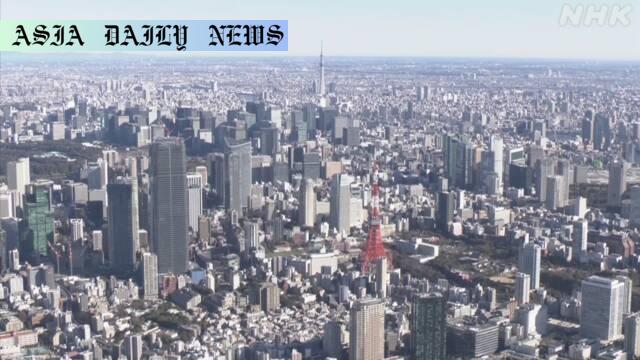Quasi-refugee: Japanese authorities granted 1,661 people ‘quasi-refugee’ status in 2024, including 1,618 from Ukraine, under new policies.
Quasi-refugee status was introduced by Japan in December 2023 under legal revisions.
1,661 individuals received quasi-refugee status in 2024, including 1,618 from Ukraine.
190 individuals were granted full refugee status in 2024, a decline from the previous year.
A policy introduced in June 2024 enforces deportation for repeat refugee claims unless justified.
17 individuals were deported in late 2024 under stricter asylum application policies.

The Introduction of Quasi-Refugee Status in Japan
In December 2023, Japan introduced a revolutionary immigration status, termed “quasi-refugee,” as part of revisions to the Immigration Control and Refugee Recognition Act. This new status caters to individuals who flee conflicts or persecution in their home countries but fall outside the conventional criteria outlined in the international refugee convention. The introduction of this status signals a targeted move by Japanese authorities to address evolving humanitarian crises while maintaining a robust immigration framework.
Statistics and Demographics for 2024 Quasi-Refugees
In the year 2024, Japan granted quasi-refugee status to an impressive 1,661 individuals. Ukrainians led the cohort, with 1,618 individuals receiving this status due to the ongoing conflict in their country. Other major beneficiaries included 17 individuals from Syria and 13 from Myanmar. This status has provided much-needed protection to those displaced by conflict and persecution, without expanding traditional definitions of full refugee status as governed by international agreements.
Changes in Full Refugee Designations
While the introduction of quasi-refugee status marked a significant step forward, the number of people granted full refugee status in 2024 declined considerably. Only 190 individuals were recognized as full refugees, a reduction of 113 compared to the previous year. The primary nationalities included Afghans (102), individuals from Myanmar (36), and Yemeni nationals (18). This shift reflects Japan’s evolving focus on balancing humanitarian efforts with its immigration policies. However, the declining numbers raise important questions about the criteria for granting full refugee status and whether the quasi-refugee program is impacting these decisions.
Stricter Immigration Policies and Their Outcomes
In June 2024, Japan implemented a policy targeting repeat asylum claims. Under the revised guidelines, individuals who apply for refugee status more than twice without legitimate justifications face deportation. Within just six months of the policy’s enactment, 17 individuals were deported, highlighting the strict enforcement mechanisms in place. Immigration officials have emphasized that each case is reviewed independently and express hope that these measures will streamline the process while adhering to international standards of protection.
The Broader Implications of Quasi-Refugee and Immigration Policies
The introduction of quasi-refugee status and stricter asylum policies underscores a shift in how Japan manages its immigration framework. While the quasi-refugee policy provides an avenue for individuals displaced by newer global crises, the decline in full refugee statuses and the deportation numbers reflect a tightened approach to immigration. This balancing act between compassion and regulation will likely shape Japan’s role on the global stage as both a host nation and a participant in addressing international humanitarian challenges.
Commentary
Japan’s New Approach to Immigration: A Progressive yet Controversial Step
The introduction of quasi-refugee status in Japan marks a progressive, albeit controversial, development in the nation’s immigration policies. As a response to evolving global crises, it highlights Japan’s willingness to adapt its laws to better accommodate individuals fleeing contexts that are not fully addressed by traditional refugee definitions. This policy demonstrates an awareness of the complexities surrounding modern displacement, especially as conflicts like the war in Ukraine push global humanitarian thresholds.
A Balancing Act Between Compassion and Regulation
The quasi-refugee status is undoubtedly a lifeline for thousands denied protection under previous frameworks. However, the simultaneous reduction in full refugee statuses casts a shadow over the initiative. Is this new category inadvertently substituting stronger protections for a more flexible, albeit less secure, status? The sharp decline in full refugee recognitions juxtaposed with the surge in quasi-refugee grants suggests this may be the case. This approach will need to be continuously evaluated to ensure that it does not undermine commitments to international refugee protection standards.
Stricter Asylum Rules: Justified or Concerning?
The stricter asylum application policies, while potentially reducing systemic abuse, raise important ethical concerns. Deporting 17 individuals in just six months demonstrates Japan’s dedication to enforce these rules. However, there remains an inherent risk of denying protection to those who may have genuine cases but lack the resources to sufficiently substantiate them. This reform walks a fine line between judicial efficiency and the risk of inadvertently penalizing vulnerable individuals.
Future Implications and Global Significance
Japan’s updated immigration policies could serve as a model for nations grappling with similar challenges of balancing humanitarian needs and legal frameworks. However, the success of these measures will depend heavily on the fairness and transparency of their implementation. Ensuring that both quasi-refugees and full refugees receive adequate protection and opportunities to rebuild their lives will be essential to the long-term viability of these reforms. As the world watches, Japan’s approach could influence global immigration trends, for better or for worse.


